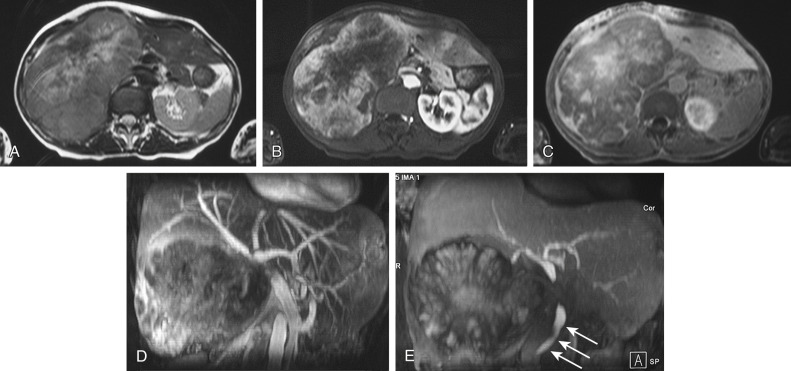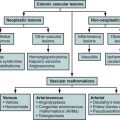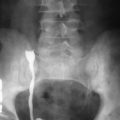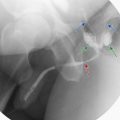Technical Aspects
Functional imaging of the gallbladder and bile ducts is a valuable tool, providing critical information for the management of conditions of the biliary system. Modern functional techniques are noninvasive and can permit earlier and improved disease characterization resulting in appropriate and timely patient care.
Ultrasonography is typically used as the initial modality for assessment of the biliary tree because it is fast, inexpensive, and noninvasive. Although highly sensitive in the evaluation of the gallbladder, ultrasound is limited in assessment of the extrahepatic biliary tree and intrahepatic bile ducts in the absence of biliary dilatation. T2-weighted magnetic resonance cholangiopancreatography (MRCP) is an MR technique performed with fast and heavily T2-weighted sequences providing optimal, noninvasive depiction of the fluid-containing biliary tree and requires no contrast. However, functional assessment of the biliary tree is based on evaluation of morphologic changes such as biliary duct dilatation, stricture, or filling defects. Additionally, MRCP does not allow objective evaluation of partial or complete obstruction of bile flow.
Oral cholecystography or cholescintigraphy allow noninvasive functional assessment of the gallbladder and the biliary tree (see later discussion). However, both oral cholecystography and cholescintigraphy have been gradually replaced by functional MR cholangiography (fMRC) and computed tomography (CT) cholangiography. Both the latter techniques require administration of contrast agents, which are eliminated via the biliary ducts, and have the potential to provide comprehensive evaluation of both the anatomy and function of the gallbladder and biliary tree.
Functional Magnetic Resonance Cholangiography
fMRC is an MR technique performed with hepatobiliary contrast agents. Hepatobiliary contrast agents with liver-specific properties have been developed primarily to increase the accuracy of MRI in the detection and characterization of focal liver lesions; however, the biliary excretion of these agents have since been explored to provide functional information about the biliary tracts.
Exclusive distribution to the hepatocellular compartment can be obtained using contrast agents that, when injected by slow infusion, accumulate within the hepatocytes and cause an increase in the proton relaxation rate. Mangafodipir trisodium (Mn-DPDP, Teslascan, GE Health, Milwaukee, WI) is a hepatobiliary MR imaging contrast agent that consists of manganese bound to dipyridoxyl diphosphate. As a result of its five unpaired electrons, manganese is moderately paramagnetic, resulting in high signal intensity on T1-weighted images. Dipyridoxyl diphosphate has a chemical structure similar to that of vitamin B 6 . After intravenous injection, mangafodipir trisodium is taken up by functioning hepatocytes through vitamin B 6 receptors. Extrahepatic uptake is observed when some of the manganese dissociates from its ligand within the blood circulation. The free manganese is then available for uptake into parenchymal cells, particularly those of the liver, pancreas, kidneys, and adrenals, in which metabolism of this metal takes place.
In Europe, mangafodipir trisodium is infused slowly (2 to 3 mL/min over a 10- to 20-minute period) at a dosage of 5-10 µmol/kg, whereas in the United States a faster injection (~1 minute) is employed. The maximum tissue enhancement is observed at the end of the infusion after approximately 20 minutes and lasts for around 4 hours. The liver parenchyma enhances significantly after mangafodipir trisodium administration, whereas tumors of nonhepatocytic origin show little or no enhancement, resulting in increased lesion conspicuity ( Figure 58-1 ). Several studies have shown improved lesion detection on images obtained after infusion of mangafodipir trisodium. Many hepatocellular lesions, on the other hand, show enhancement, thereby resulting in decreased tumor-liver contrast-to-noise ratio ( Figure 58-2 ). Uptake of mangafodipir trisodium, and therefore enhancement, by both benign and malignant hepatic neoplasms of hepatocellular origin limits their accurate differentiation and therefore represents a major shortcoming of this agent. One important advantage of this contrast agent is its biliary excretion, which is obtained in the same time window after the injection as that for the enhancement of the liver parenchyma. This excretion reflects the functionality of the hepatocytes and makes the bile bright on T1-weighted sequences. The high signal intensity of the biliary system during excretion of the contrast agent produces excellent contrast with the liver parenchyma and hepatic vessels in the background. Thus, it is possible to use T1-weighted gradient recalled echo three-dimensional (3D) images for high-resolution imaging of the biliary ducts. Source images from the 3D data set are reviewed, and maximum intensity projection (MIP) images are generated with and without a restricted volume. In March 2004, manufacturing of mangafodipir in the United States had been suspended by GE Health but resumption of manufacturing is expected, although its manufacturing continues in the other countries.


Other contrast agents demonstrate combined perfusion and hepatocyte-selective properties. Such compounds distribute initially to the vascular-interstitial compartment in a manner analogous to that of the conventional, extracellular contrast agents. Thereafter, a fraction of the injected dose is taken up into the hepatocytes, causing an increase of the signal intensity of the hepatic tissue. Agents of this type include gadobenate dimeglumine (Gd-BOPTA) and gadolinium ethoxybenzyl diethylenetriamine pentaacetic acid (Gd-EOB-DTPA).
Gd-BOPTA is a chelate of gadolinium and benzyloxypropionictetraacetic acid. It was approved for use in the United States in December 2004 and has been used in Europe for several years. Gd-BOPTA is a second-generation gadolinium chelate that combines the properties of a conventional extracellular gadolinium agent with those of an agent targeted specifically to the liver. Two features that distinguish Gd-BOPTA from the conventional gadolinium chelates are a capacity for weak and transient interaction with serum albumin and an elimination profile that sees roughly 96% of the injected dose excreted renally via glomerular filtration; the remaining 2% to 4% is taken up by functioning hepatocytes and eliminated in the bile via the hepatobiliary pathway. Whereas the former feature confers on Gd-BOPTA a twofold greater T1 relaxation rate in vivo, the latter leads to a marked and long-lasting enhancement of the signal intensity of normal liver parenchyma, resulting in an additional, delayed imaging window beginning 40 minutes after Gd-BOPTA administration. Studies have shown that although Gd-BOPTA behaves in an analogous way to conventional gadolinium agents during the dynamic phase of contrast enhancement, in the delayed phase it improves the impact of MRI for the detection of focal liver lesions and may also contribute to the improved characterization of detected lesions, particularly lesions demonstrating atypical enhancement on dynamic imaging ( Figure 58-3 ).

Gd-EOB-DTPA exploits the carrier used by hepatocytes for the uptake of bilirubin. In a manner analogous to that of Gd-BOPTA, this contrast agent distributes initially to the vascular-interstitial compartment after injection. However, whereas only 2% to 4% of the injected dose of Gd-BOPTA is thereafter taken up by hepatocytes and eliminated in the bile, in the case of Gd-EOB-DTPA some 50% of the injected dose is taken up and eliminated via the hepatobiliary pathway after approximately 60 minutes. The maximum increase of liver parenchyma signal intensity is observed approximately 20 minutes after injection and lasts for approximately 2 hours. During the perfusion phase the dynamic enhancement patterns seen after injection of Gd-EOB-DTPA are similar to those seen with Gd-DTPA, whereas during the hepatobiliary phase Gd-EOB-DTPA–enhanced images have been shown to yield a statistically significant improvement in the detection rate of metastases, hepatocellular carcinomas, and focal nodular hyperplasia compared with unenhanced and Gd-DTPA–enhanced images.
Also with these contrast agents, it is possible to analyze their biliary excretion with T1-weighted gradient recalled echo 3D images. There are no available data comparing the two contrast agents in their biliary excretion, although the greater percentage of biliary excretion of Gd-EOB-DTPA should give a better contrast of the biliary ducts. However, in practical comparison with normal patients, no significant differences can be appreciated, whereas in patients with liver-impaired function, the biliary excretion of Gd-BOPTA is very low.
A major advantage of these contrast agents compared to mangafodipir trisodium is the possibility to use them for dynamic imaging of the liver. Thus, in addition to arterial and portal phase imaging for detection and characterization of liver lesions, hepatic arterial and portal vein status can be evaluated. Vascular assessment, together with parenchymal imaging and functional biliary imaging, can provide a comprehensive evaluation of hepatic disease (“one-stop shopping technique” ( Figure 58-4 ). If T2-weighted MRC and fMRC have to be performed in the same sitting, it is advisable to perform fMRC sequences after T2-weighted MRC sequences, to avoid T2 shortening effects related to the excretion of the hepatobiliary contrast agent in the biliary tree.

Computed Tomography Cholangiography
CT cholangiography is performed after intravenous drip infusion of a biliary contrast agent that is excreted by the biliary system and induces opacification of the gallbladder and the biliary tree after at least 15 to 20 minutes. High spatial resolution CT is commonly performed, with thin sections (1 to 2 mm thickness), to allow high-resolution multiplanar reformation (MPR) images and 3D postprocessed images.
CT cholangiography has shown potential for the depiction of biliary tree anatomy. Some authors have reported better biliary tract visualization with CT cholangiography than T2-weighted MRC or fMRC, either alone or in combination in potential living donors, because it may provide better depiction of second-order biliary branching. Additionally, CT cholangiography is an inexpensive and widely available technique compared with fMRC. However, there are factors limiting its application in routine clinical evaluation.
CT cholangiography contrast agents reportedly have a higher rate of adverse reactions, compared with hepatobiliary contrast agents for fMRC, suggesting the need for premedication of all patients with antihistaminic drugs before the examination. High spatial resolution CT with isotropic voxel reconstruction should be performed for multiplanar reconstructions to optimally depict biliary anatomy that could increase radiation dose. Furthermore, high spatial resolution images are improving with recent state-of-the art MRI.
Although CT cholangiography has been evaluated and is in clinical use in Asia and Europe, its application in routine clinical evaluation is still limited. CT cholangiography in routine clinical evaluation is confined to selected cases, and experience with this technique is lower than with other functional imaging techniques.
Pros and Cons
See Table 58-1 .
| Imaging Type | Pros | Cons |
|---|---|---|
| fMRC |
|
|
| CT cholangiography |
|
|
Pros and Cons
See Table 58-1 .
| Imaging Type | Pros | Cons |
|---|---|---|
| fMRC |
|
|
| CT cholangiography |
|
|
Normal Anatomy
The gallbladder and cystic duct develop from a diverticulum that develops in the caudal portion of the primitive hepatic duct. Within 3 months of gestation, the entire biliary system and gallbladder have canalized to form a continuous lumen. Bile capillaries communicate with biliary canaliculi creating a small passage between two contiguous hepatocytes; they encircle the hepatic lobule and open into the interlobular bile ducts. They join with other ducts and form segmental ducts in the left and right lobes of the liver (anterior and posterior segmental ducts), which fuse, respectively, into the main left and right hepatic ducts (LHD and RHD).
The main LHD and RHD normally converge and form the common hepatic duct (CHD), which passes for approximately 4 cm between the layers of the lesser omentum, where it is joined at an acute angle by the cystic duct and thus forms the common bile duct (CBD). The CBD consists of supraduodenal, retroduodenal, pancreatic, and intraduodenal segments; its terminal portions, the terminal portion of pancreatic ducts, and their common channel are encircled by the muscular structure of the sphincter of Oddi.
The gallbladder is a thin-walled, musculomembranous sac that generally holds 20 to 30 mL and generally measures 7 to 10 cm in length and 3 cm in width. It is located in a fossa on the inferior surface of the right lobe of the liver. It is divided into a fundus, projecting beyond the anterior margin of the liver, body, and neck, and converges into the cystic duct.
Bile is the liquid flowing in the biliary system that is composed of three major components: cholesterol, bile salts, and bilirubin. It is continuously formed in the liver, but its flow into the duodenum is regulated by periodic relaxation of the sphincter of Oddi, and then it accumulates in the hepatic duct and in the CBD when this sphincter is contracted. As pressure in the CBD increases to 50 to 70 mm H 2 O, bile flows into the cystic duct and accumulates in the gallbladder. In the gallbladder, bile concentrates as a result of H 2 O absorption and manifests as increased viscosity, compared with the hepatic bile, owing to mucin secretion from the gallbladder wall. Gallbladder emptying is mainly the result of hormonal stimuli. When gastric contents reach the duodenum, cholecystokinin (CCK) is released from the duodenal wall, causing the gallbladder to contract and the sphincter of Oddi to relax, allowing bile to empty. In addition, CCK allows the cystic duct and sometimes the CBD to contract. Coordination of gallbladder and sphincter of Oddi function also may be influenced by nerve bundles that connect the gallbladder and the sphincter of Oddi via the cystic duct.
Stay updated, free articles. Join our Telegram channel

Full access? Get Clinical Tree







